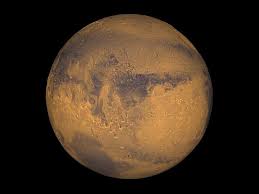Ask someone to draw a planet on paper, odds are they will draw Saturn with its majestic rings. Surrounded by 82 moons, the Saturnian system in itself is like a mini solar system. Among these 82 moons, the most interesting is Titan, which looks similar to Earth.
New research reveals the presence of landscapes on the surface of this Moon formed due to a global sand cycle driven by seasons. The largest moon in the Saturn system, Titan has rivers, lakes, and seas filled by rain coming through a thick atmosphere. However, these lakes are filled with different materials than one on Earth.
Liquid methane streams streak Titan’s icy surface and nitrogen winds build hydrocarbon sand dunes. Now a team of researchers led by Stanford University geologist Mathieu Lapotre had revealed how Titan’s distinct dunes, plains, and labyrinth terrains could be formed.
Published in the journal Geophysical Research Letters, the research shows how the season cycle drives the movement of grains over the moon’s surface. Scientists have long admired this mysterious world for having Earth-like features along with a seasonal liquid transport cycle.
“Our model adds a unifying framework that allows us to understand how all of these sedimentary environments work together. If we understand how the different pieces of the puzzle fit together and their mechanics, then we can start using the landforms left behind by those sedimentary processes to say something about the climate or the geological history of Titan and how they could impact the prospect for life on Titan,” Lapotre, an assistant professor of geological sciences at Stanford’s School of Earth, Energy & Environmental Sciences said in a statement.
HOW DO DUNES FORM ON TITAN?
Dunes on Earth are formed by silicate rocks and minerals that erode into sediment grains over time, moving through winds and streams to be deposited in layers of sediments that eventually with the help of pressure, groundwater, and sometimes heat turn back into rocks.
On Titan, researchers say, similar processes formed the dunes, plains, and labyrinth terrain. But, unlike Earth, Mars, and Venus, Titan’s sediments are thought to be composed of solid organic compounds. Scientists have long been trying to understand how its basic organic components can transform into grains that form distinct structures.
“As winds transport grains, the grains collide with each other and with the surface. These collisions tend to decrease grain size over time. What we were missing was the growth mechanism that could counterbalance that and enable sand grains to maintain a stable size through time,” Lapotre said.
ANSWER LIES ON EARTH
The team found the answer to the mystery by analysing sediments on Earth called ooids, which are small, spherical grains most often found in shallow tropical seas, such as around the Bahamas. These sediments form when calcium carbonate is pulled from the water column and attaches in layers around a grain, such as quartz.
“We were able to resolve the paradox of why there could have been sand dunes on Titan for so long even though the materials are very weak,” the researcher said. The team hypothesizes that it is due to fusing together grains into one piece that counterbalances the effect of winds holding themselves from being blown away.
The team combined existing data around Titan’s climate and the direction of wind-driven sediment transport with their model to conclude that landscapes exist on the surface. Atmospheric modeling and data from the Cassini mission reveal that winds are common near the equator. The team has predicted a lull in sediment transport at mid-latitudes on either side of the equator.
“We’re showing that on Titan just like on Earth and what used to be the case on Mars we have an active sedimentary cycle that can explain the latitudinal distribution of landscapes. “It’s pretty fascinating to think about how there’s this alternative world so far out there, where things are so different, yet so similar,” Lapotre said.



































